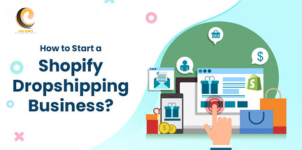Shopify Dropshipping Guide: How to Start and Scale Your Business
The dropshipping business model has become one of the most popular ways for entrepreneurs to start an online store. With Shopify, you can launch a dropshipping business without ever handling inventory or dealing with fulfillment. This guide will walk you through the essential steps of setting up your Shopify dropshipping store and offer proven strategies for scaling it to success.
Whether you're just starting out or looking to grow your Shopify dropshipping course, this guide will help you navigate everything from product selection and supplier management to marketing tactics that drive traffic and conversions.
1. What is Shopify Dropshipping?
Dropshipping allows you to sell products without keeping inventory on hand. Instead, when a customer places an order, you purchase the item from a third-party supplier, who ships it directly to the customer. Shopify is one of the best platforms for running a dropshipping store due to its ease of use, scalability, and wide range of apps.
2. How to Set Up a Shopify Dropshipping Store
Step 1: Choose a Niche
Choosing the right niche is critical to the success of your dropshipping business. Focus on a niche that you're passionate about, has proven demand, and is not overly saturated. For instance, offering Shopify courses free or a Shopify course in Lahore could target a specific local audience or niche market.
Step 2: Sign Up for Shopify
If you don’t already have an account, visit Shopify and sign up for a free trial. Shopify offers various pricing plans based on your business needs, making it flexible for both beginners and established businesses.
Step 3: Install Oberlo or Similar Dropshipping Apps
To streamline product importing and fulfillment, Shopify offers integrations with dropshipping apps like Oberlo and DSers. These apps allow you to browse and import products from suppliers with just a few clicks.
Step 4: Choose Your Products
Use dropshipping apps to research and select trending products within your chosen niche. Ensure you pick products with good supplier ratings, competitive prices, and high demand.
Step 5: Design Your Shopify Store
Your store’s design plays a significant role in converting visitors into buyers. Choose a theme that’s easy to navigate, mobile-friendly, and visually appealing. Make sure you optimize for keywords like Shopify dropshipping course free and dropshipping Shopify course to increase your SEO ranking.
3. How to Find Reliable Suppliers for Your Shopify Store
Finding trustworthy suppliers is key to maintaining a successful dropshipping business. Here are a few methods to find reliable suppliers:
- Use Shopify’s Dropshipping Apps: Apps like Oberlo, Spocket, and Modalyst feature vetted suppliers with fast shipping times.
- Research Suppliers on Alibaba or AliExpress: If you’re sourcing products internationally, AliExpress is a popular marketplace for dropshippers.
- Check Shipping Times: Look for suppliers with fast and reliable shipping options, especially if you’re targeting local markets like a Shopify course in Pakistan.
4. Marketing Your Shopify Dropshipping Store
Leverage Social Media
Platforms like Instagram, Facebook, and TikTok are powerful tools for promoting your Shopify store. You can use organic posts, influencer partnerships, and paid ads to drive traffic.
Invest in Paid Ads
Facebook and Google Ads are two popular methods of running paid campaigns for Shopify stores. By targeting specific audiences, you can promote your products and increase brand awareness.
SEO Optimization
To attract organic traffic, optimize your Shopify store for SEO by including keywords such as best Shopify course, Shopify training, and Shopify classes in your product descriptions and meta tags. Blogging about dropshipping and related topics can also help boost your store’s search engine rankings.
5. Scaling Your Shopify Dropshipping Business
Once your Shopify store is up and running, it’s time to focus on scaling your business. Here’s how:
- Expand Product Offerings: Introduce new products or complementary items to increase average order value.
- Offer Upsells and Cross-Sells: Use apps like Bold Upsell to recommend related products at checkout.
- Build an Email List: Capture emails from site visitors and send promotional offers or updates about new products through Shopify’s email marketing tools.
- Improve Customer Support: Consider adding a chatbot or live chat option to assist customers and answer questions instantly.
6. Common Mistakes to Avoid in Shopify Dropshipping
While dropshipping offers a low barrier to entry, there are common pitfalls that many beginners encounter:
- Choosing the Wrong Products: Avoid selling products that are too expensive to ship, have poor reviews, or are oversaturated in the market.
- Ignoring Customer Service: Prompt and helpful customer service is crucial for maintaining a positive reputation and encouraging repeat business.
- Underestimating Shipping Times: Long shipping times can lead to customer dissatisfaction, so choose suppliers that offer faster delivery options.
Conclusion:
Starting a Shopify dropshipping business offers entrepreneurs a flexible and scalable way to enter the e-commerce world. By following this guide, you can set up your Shopify store, find reliable suppliers, and effectively market your products to a targeted audience. With consistent effort, your dropshipping business can grow from a small venture into a thriving online store, whether you’re offering Shopify dropshipping courses or selling physical products.

